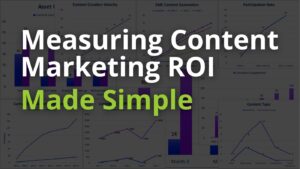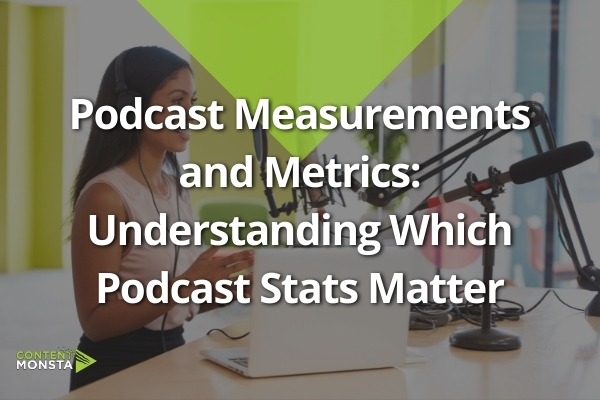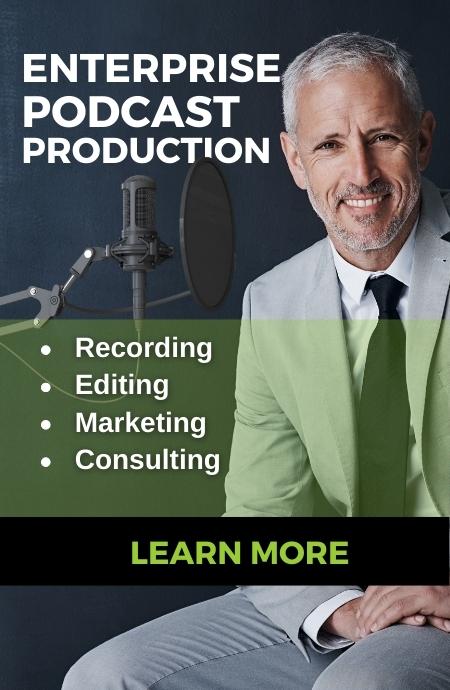Measuring a branded podcast for businesses is a strategic move that requires different metrics and considerations compared to entertainment-focused podcasts. The underlying goals and objectives of these two categories of podcasts are fundamentally different, and this divergence in purpose calls for distinct ways to measure success.
Business Podcasting Goals: Building Brand, Authority, Web Traffic, and Leads
Brand Building
Business podcasts often aim to position a company as a thought leader or expert in a specific industry. They are not necessarily seeking mass appeal but rather targeting a niche audience that is directly relevant to their business. Metrics like brand recognition and perception within the specific target market are more critical than general popularity.
Building Authority
A business podcast often serves to establish authority within an industry. It might feature interviews with experts, deep dives into industry topics, or provide professional insights. The goal here isn’t necessarily to have a vast audience but to have the right audience, such as industry professionals, potential clients, or partners, who will value and engage with this specialized content.
Web Traffic
Business podcasts may aim to drive listeners to a corporate website or specific landing pages. The success here is not just about a large number of listeners but driving quality traffic that engages with the site, signs up for newsletters, downloads resources, or becomes leads. Traditional metrics like sheer download numbers wouldn’t capture this nuanced goal.
Lead Generation
For a business podcast, converting a listener into a potential customer or a warm lead might be the ultimate objective. It’s about creating valuable, targeted content that prompts listeners to take a specific action like filling out a contact form or making a purchase. Measuring the conversion rate rather than just listenership provides a better understanding of how effectively the podcast contributes to business growth.
Entertainment Podcast Goals: Fame and Huge Listener Numbers
Entertainment podcasts, on the other hand, often seek broad appeal and high listener numbers. They thrive on popularity and often depend on advertising revenue, which is directly tied to listenership. Metrics like downloads, subscriber counts, and listener demographics are critical because they directly influence advertising rates and sponsorship opportunities.
How do you measure a business podcast’s success?
First, you need to establish What to measure, Why you are measuring it, How to measure it, and Where to find the data.
Podcast Content Reuse and Increased Content Generation
Why Measure:
Podcast content can generate multiple other pieces and forms of content. Episodes can be repurposed into blogs, newsletters, videos, and more. Understanding this reuse can provide insights into content efficiency and value. Even at zero listens, this asset creates other assets and creates efficiency in content creation.
What to Measure:
Increase in content output, reuse life of content, and cross-channel pollination.
How to Measure:
Track where and how podcast content is repurposed across various channels. Set a baseline of the amount of content you produced per month before the podcast, (how many blogs, social posts, and multimedia content) then measure that output over time.
Where’s the Data:
Content management systems, social media calendars, cross-channel analytics tools (e.g., tracking how podcasts are converted into blog posts, videos, etc.), and collaboration with other departments that might utilize the content.
Building Brand Awareness and Perception
Why Measure:
Building brand awareness can create a positive perception, making it easier to attract new customers and retain existing ones.
What to Measure:
Increase in brand recognition and positive perception.
How to Measure:
Monitor brand mentions online, website traffic, conduct surveys.
Where’s the Data:
Google Alerts, Google Analytics, social media monitoring tools (also Market research firms and surveys)
Influence on Strategic Relationships
Why Measure:
Podcasts provide opportunities to have conversations with otherwise unreachable people. If the podcast’s objective includes forming business partnerships or networking, tracking this can demonstrate the podcast’s influence on business development.
What to Measure:
Number of new high-level connections made, meetings, and networking opportunities.
How to Measure:
Track the relationships and opportunities that arise from the podcast directly.
Where’s the Data:
CRM systems, key meetings landed, partnership agreements, networking event attendance records, LinkedIn or other professional networking sites, and direct communication with key decision makers.
Lead Generation and Sales
Why Measure:
By tracking the conversion of listeners to leads or customers, you can directly link your podcast’s influence to revenue generation.
What to Measure:
Number of leads and sales generated from the podcast.
How to Measure:
Use tracking links, unique promo codes, and surveys during customer interaction to identify how many leads or sales were influenced by the podcast.
Where’s the Data:
CRM systems, Google Analytics, Marketing Automation Platform
Podcast Audience Engagement and Growth
Why Measure:
While not directly tied to revenue, engaged listeners are more likely to become customers, make repeat purchases, and refer others.
What to Measure:
Measure starting from zero and monitor for constant increase. Be aware of the growth of listener engagement metrics like downloads, subscriptions, shares, comments, and ratings.
How to Measure:
Monitor podcast file hosting platforms, social media, and website analytics for engagement-related data. Do not compare your day one to a competitor’s day 100.
Where’s the Data:
Podcast hosting platforms (e.g., where the file is stored)
Revenue Growth through Content Engagement
Why Measure:
Content creation in the form of podcasting can be a critical driver for revenue growth. By offering valuable insights and information tailored to the target audience, business podcasts can build familiarity and trust with the brand. Over time, this engagement translates into a more comfortable relationship with potential customers, leading to higher conversion rates and increased revenue. By attracting qualified leads through content that resonates with their needs and interests, businesses are more likely to see a positive ROI from their podcasting efforts.
What to Measure:
Engagement with content, conversion rates, revenue increase.
How to Measure:
Track user interaction with content, monitor conversion paths, and analyze revenue growth attributed to content engagement.
Where’s the Data:
Google Analytics, CRM systems, sales databases, marketing automation platforms.
Bonus – For Internal Podcasts:
Employee Engagement and Internal Communication Through Podcasting
Why Measure:
For podcasts aimed at employees, engagement metrics can help measure effectiveness in internal communication and team building.
What to Measure:
Employee listenership, feedback, participation.
How to Measure:
Track internal analytics, conduct internal surveys, and gather feedback.
Where’s the Data:
Internal analytics tools, feedback forms, intranet systems, and employee surveys.
Measuring ROI in business podcasts involves a multi-dimensional approach that extends beyond simple listener numbers. By carefully aligning metrics with specific business goals and using a combination of quantitative and qualitative measures, a business can gain a clear understanding of the value their podcast is providing.

AI + Human Powered Content Marketing: Speed Without the AI Slop
FAST, CHEAP, and GOOD. You can have them all. Speed keeps coming up in client conversations, and for good reason. The meaning of speed has changed. Fast used to mean

How to Measure Content Marketing ROI
Content marketing ROI is often miscalculated because it is based on a short time frame, a single piece of content, or even a single campaign. Instead, it should be measured

Why Pay for Remote Video Production
If you already have someone on your team who can edit videos, it’s fair to ask, “Why would we pay an outside agency?” In reality, remote video production doesn’t require





